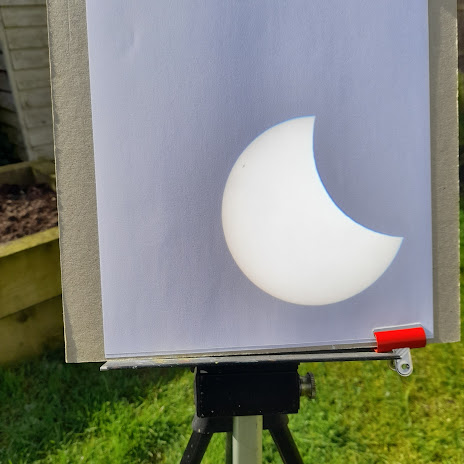Last night (28th April 2025) I was able to observe a new variable star - V Canum Venaticorum. This star sits in the constellation of the hunting dogs that chase the great bear (Ursa Major) across the sky. The constellation is very well placed at the moment and is virtually overhead as proper darkness falls. The weather was clear and the moon was just one day past new and not an issue. The end of astronomical twilight is now approaching 11pm BST.
The star is found on BAA chart 214.02. According to the BAA this is an SRa type pulsating variable with a period of about 192 days. It ranges in magnitude between 6.52 and 8.56. The star is found close to the end star of the plough asterism (the star name Alkaid) and lies on the other side of the galaxy M51 (The Whirlpool). I was quite pleased that I could actually see this galaxy in my 10x50 binoculars.
Here is my estimate for this variable star:-
V CVn, 21:53 UT, chart 214.02, E(2)V(3)G, mag. 6.7
Just a reminder about how these estimates are worked. Comparison star E is magnitude 6.5 and star G is 7.0. V was between these two stars in brightness but nearer to E. My estimate put V at 2 points from B and three from G, that is E(2)V(3)G or magnitude 6.7.
All text and images © Duncan Hale-Sutton 2025









